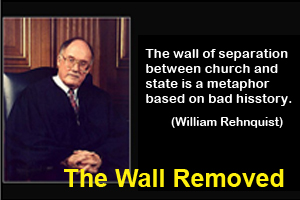
The Structure of Government
TimeWatch Editorial
May 6, 2016
The structure of the government of the United States of America is unique. The departure of the Pilgrims to the New World was accompanied with very little foreknowledge of what might be expected. The beginning of the Colonial experience was one of experiment, driven by a determination not to return to the intense coercive domination of Europe. Because of their connection with the nations of Europe, the colonists found themselves at first dependent to a great extent upon interaction with their former homeland. But as time proceeded, the relationship soured even more seriously developing into a number of grievances that ultimate led to the Declaration of Independence in the year 1776. We will not here detail the resulting resentment this Declaration produced in the European homeland, suffice it to say that The American Revolutionary War which began in 1775 and lasted until 1783), was also known as the American War of Independence. This Revolutionary War fought in the United States, was the armed conflict between Great Britain and thirteen of its North American colonies, which had declared themselves the independent United States of America. Because of the afore mentioned grievances, the colonies put together a form of government called The Continental Congress. This was a representative form of government.
“From 1774 to 1789, the Continental Congress served as the government of the 13 American colonies and later the United States. The First Continental Congress, which was comprised of delegates from the colonies, met in 1774 in reaction to the Coercive Acts, a series of measures imposed by the British government on the colonies in response to their resistance to new taxes. In 1775, the Second Continental Congress convened after the American Revolutionary War (1775-83) had already begun. In 1776, it took the momentous step of declaring America’s independence from Britain. Five years later, the Congress ratified the first national constitution, the Articles of Confederation, under which the country would be governed until 1789, when it was replaced by the current U.S. Constitution.” The History Channel, “The Continental Congress.”
The unity of the colonies was based upon agreed opposition to the oppressive methodology of the British government. So the Declaration of Independence was the final response to the perceived indignities leveled by the British government. The next step would of course be to determine how the new government would best function.
“The Congress was established in 1787 when the Constitutional Convention adopted the United States Constitution. In 1789, with only 20 senators and 59 representatives, the first Congress met in Federal Hall in New York City. Today, the Senate is composed of two Senators from each state, who are elected to serve a term of six years. The Members of the House of Representatives, who each represent approximately 600,000 people, are elected for two-year terms. The number of representatives from each state is determined by population, but each state is entitled to at least one representative.” The Two Houses of the United States Congress
Perhaps the most important part for your understanding of all this is called; “The Great Compromise of 1787.”
“As is often the case in government and politics, resolving a great debate, required a great compromise. In this case, the Great Compromise of 1787. Early in the Constitutional Convention, delegates envisioned a Congress consisting of only a single chamber with a certain number of representatives from each state. The burning question was, how many representatives from each state? Delegates from the larger, more populous states favored the Plan, which called for each state to have a different number of representatives based on the state’s population. Delegates from smaller states supported the plan, under which each state would send the same number of representatives to Congress.” The Great Compromise of 1787
So what would they do? How would they resolve this? The decision was made to have both. Something called a “Bicameral” or a legislative body having two branches or chambers.
Today, each state is represented in Congress by two Senators and a variable number of members of the House of Representatives based on the state’s population as reported in the most recent decennial census. The process of fairly determining the number of members of the House from each state is called "apportionment." The Great Compromise of 1787
Not only is the structure of the Congress unique, but the structure and function of the entire United States Government is unique. This has allowed for the pursuit of the Declaration of Independence itself as expressed, until recent events have occurred. Those who seek to interrupt the pursuit of happiness, reestablish inequality and banish liberty of conscience understand that they must first illuminate the present structure of government. What they might not know, however, is the secret to our nation’s power.
“The Constitution guarantees to the people the right of self-government, providing that representatives elected by the popular vote shall enact and administer the laws. Republicanism and Protestantism became the fundamental principles of the nation. These principles are the secret of its power and prosperity. The oppressed and down-trodden throughout Christendom have turned to this land with interest and hope. Millions have sought its shores, and the United States has risen to a place among the most powerful nations of the earth.” {Great Controversy, page 441.1}
Remove either of those elements and the power departs.
Cameron A. Bowen







